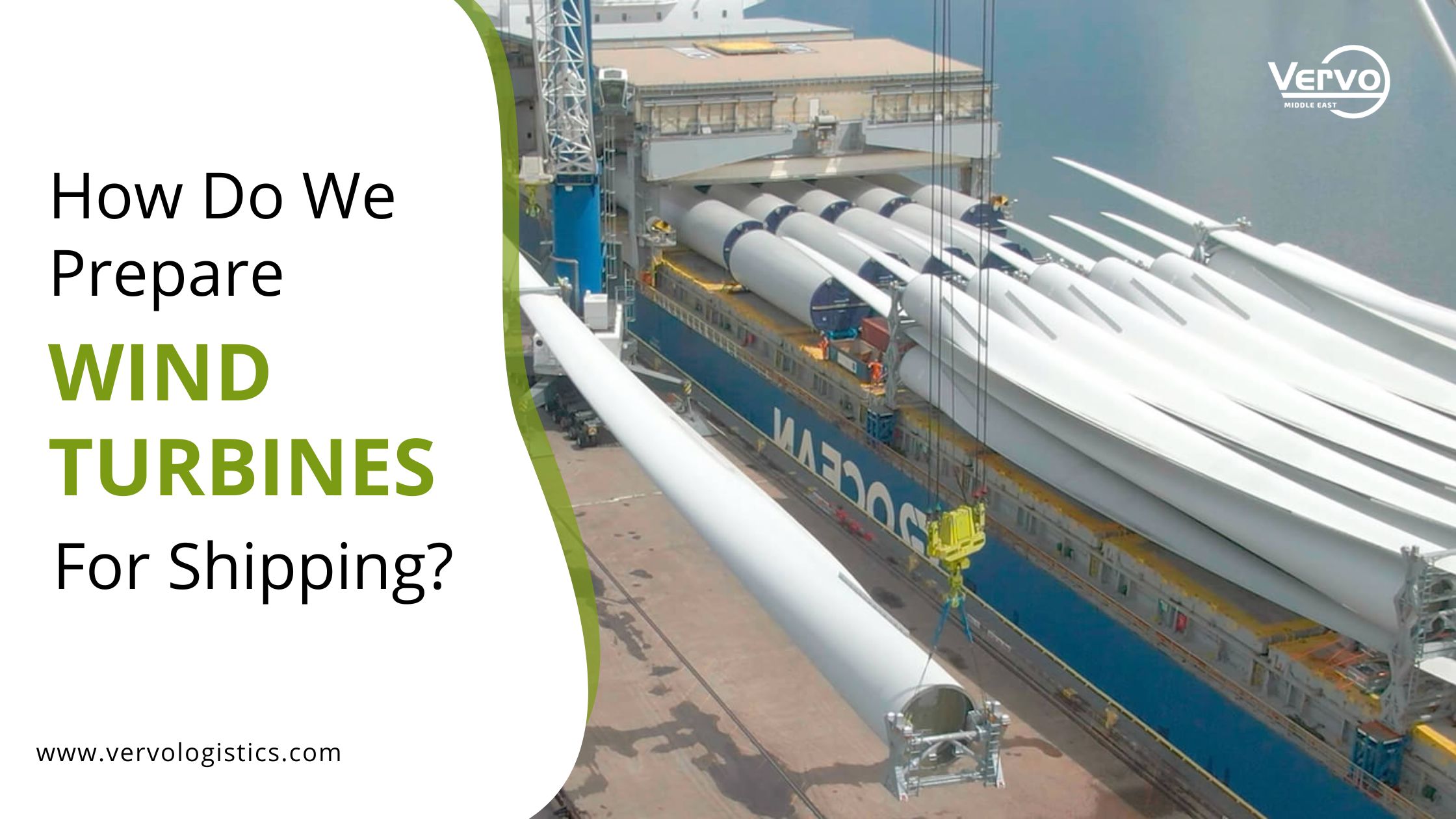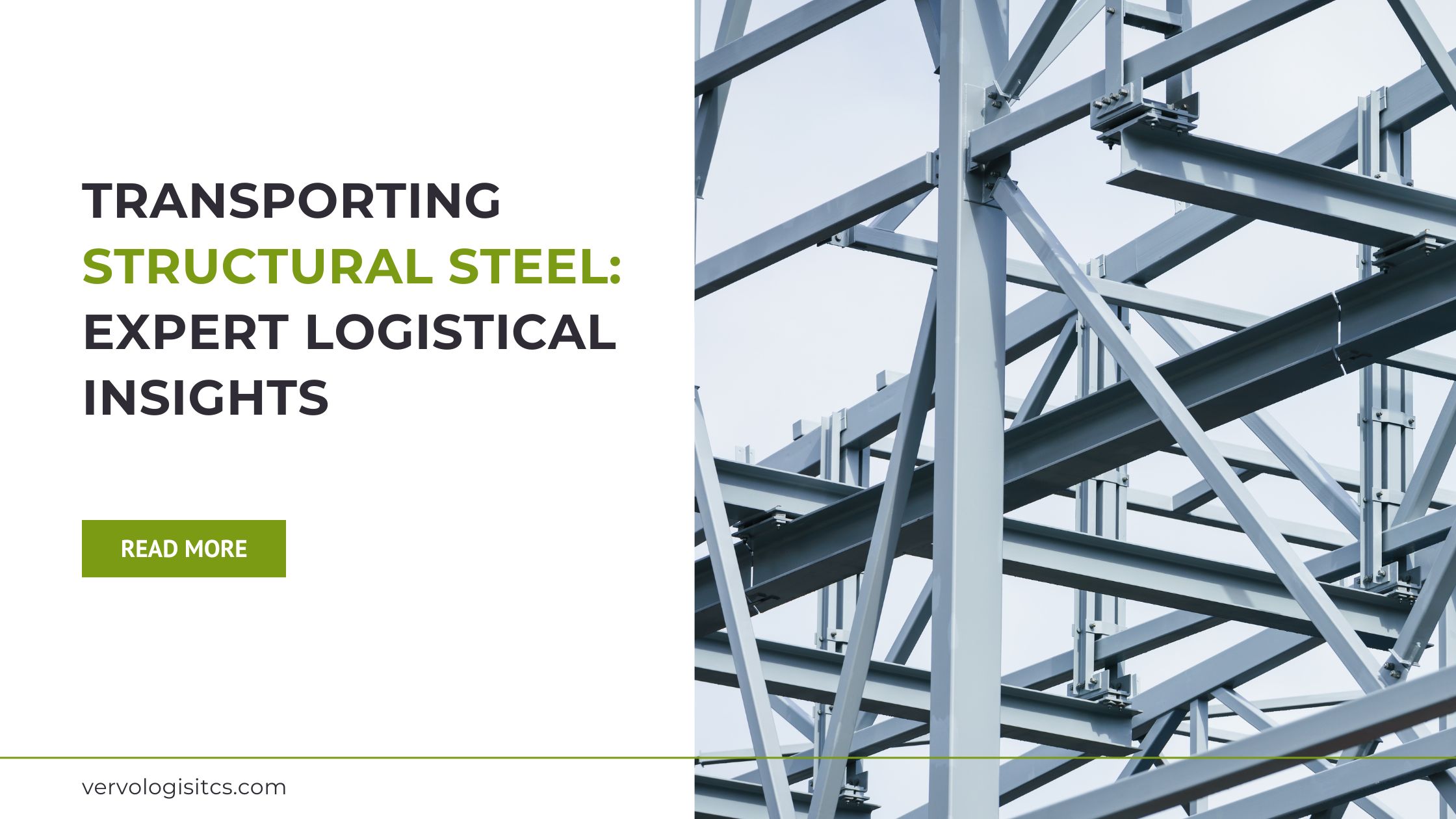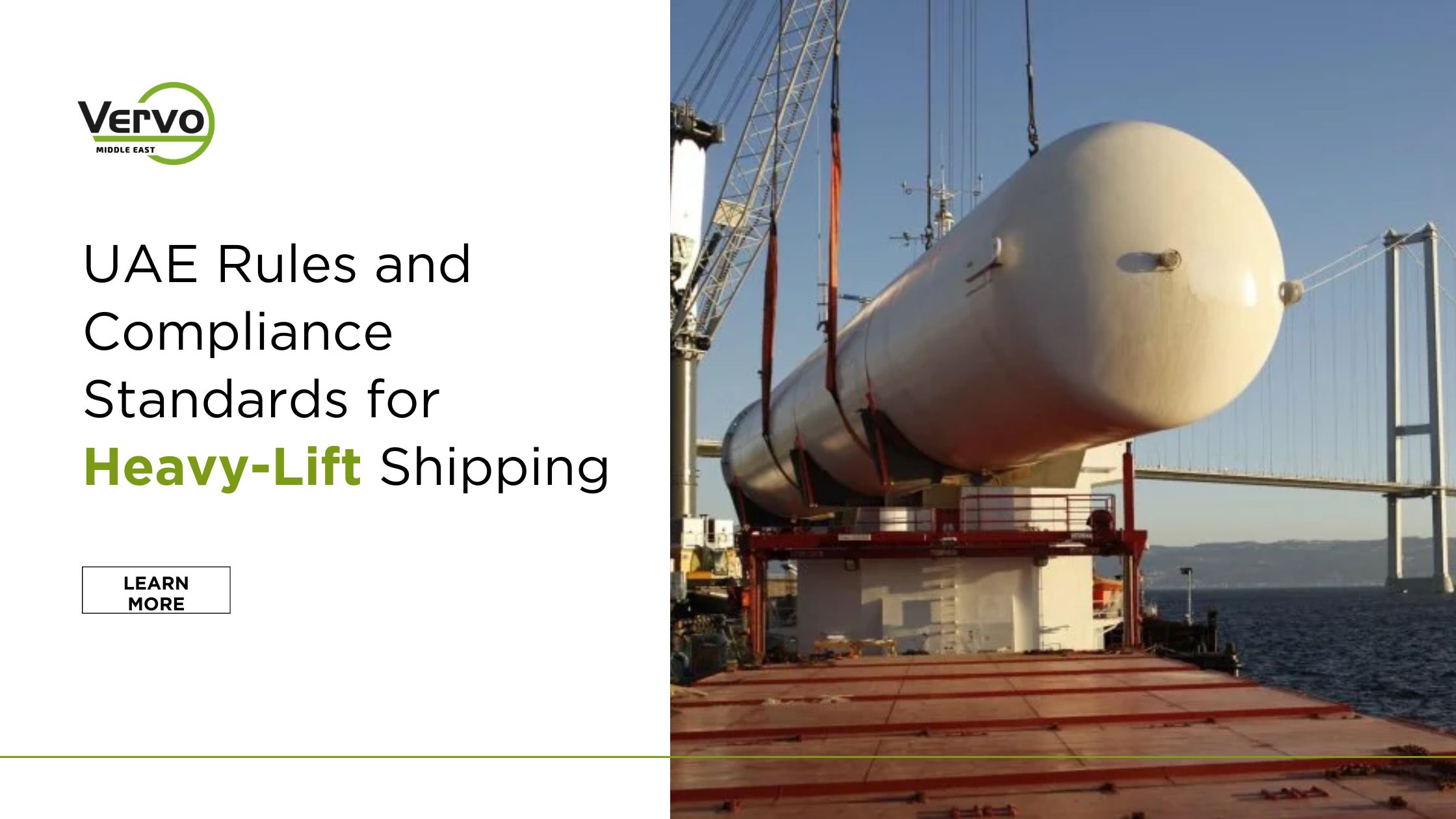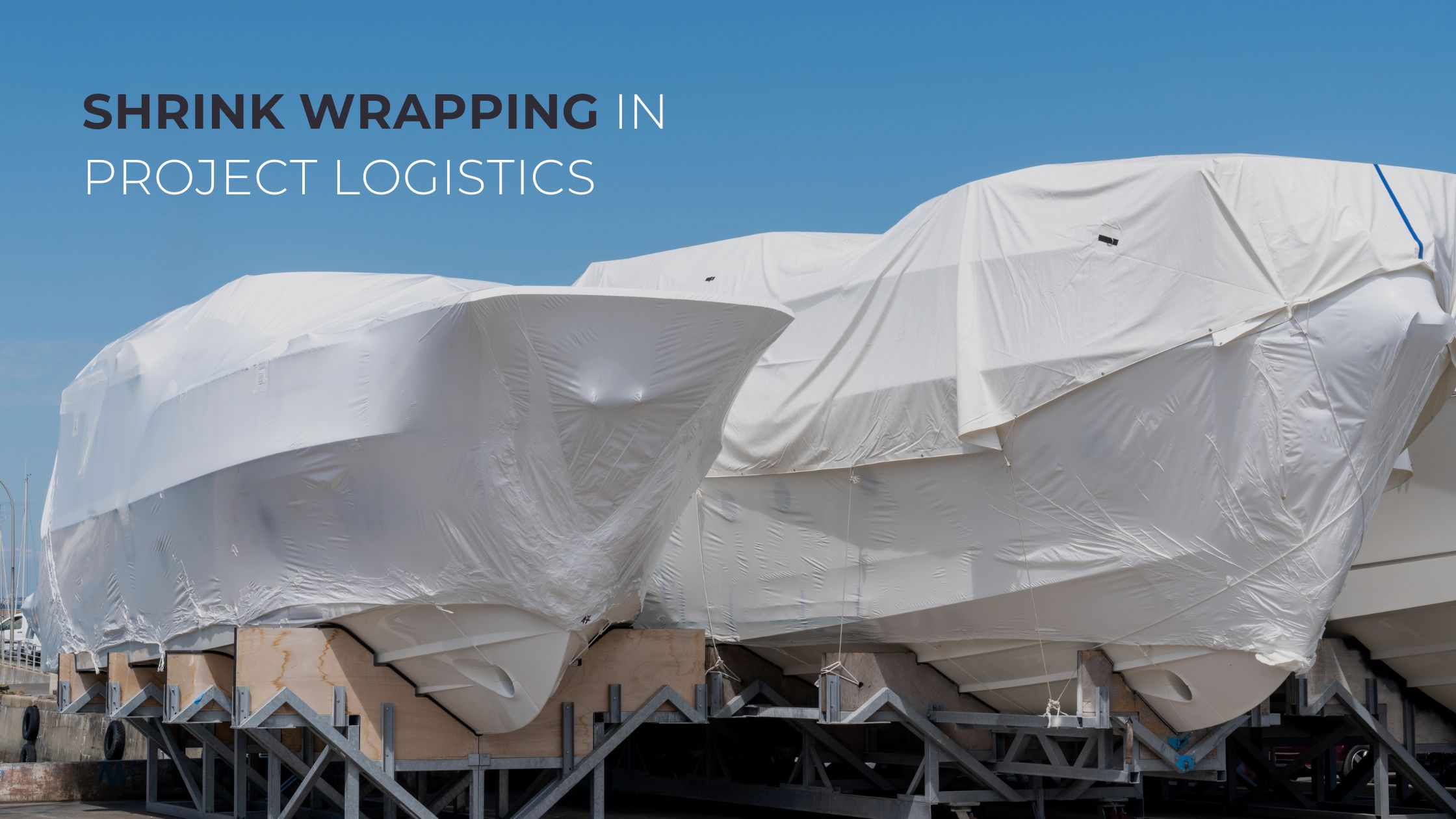For the last decade, the renewable energy market has been noticeably growing across the Gulf Cooperation Council (GCC) region.
With ample wind resources, countries like the UAE, KSA, Oman, and recently Qatar have already launched mega wind projects to increase their reliance on clean energy and sustainable power sources by 2030.
That is why we have seen a significant increase in the imports of wind turbines over the past few years. However, shipping wind turbines still presents unique logistical challenges.
Modern onshore wind turbines are considered oversized and heavy-lift cargo stand over 200 meters tall, and major components can weigh over 100 tons. The nacelle alone often exceeds 50 tons, while 112-meter blades can tip the scales at 40 tons each.
Turbine parts journey vast distances—by road, rail, or sea—from factories in Europe or Asia to windy Middle East installation sites.
So, how do we prepare these gigantic structures for shipping? Here is inside knowledge of the logistical processes wind turbines undergo to keep their delivery on course. ⬇️
Understanding Wind Turbines Components and Shipping Needs
Each component of the wind turbine presents its own distinct set of shipping challenges. The key components include the three composite rotor blades, tower sections, nacelle, hub, and generator.
✅ Blades:
Often stretching over 70 meters in length while weighing over 40 tons each. Turbine blades are the epitome of oversized cargo. Their slender shape, vulnerability to stress, and susceptibility to damage require custom-built trailers, support fixtures, and escort vehicles for road transport, besides specialized equipment for loading and unloading at ports to prevent structural damage.
Specialized trucks with extendable trailers transport single blades horizontally; navigating tight turns requires police escorts shutting down roads. Alternatively, self-propelled modular transports (SPMTs) haul all three upright blades together. Sea transport on breakbulk ships is inevitable for the Middle East journey, as most of the manufacturing sites are in Europe and Asia.
✅ Tower Sections:
Tower sections are modular steel or concrete giants and can range up to 30 meters per section. Although they are shorter, they can be just as tricky to transport due to their weight and cylindrical shape. Tower sections require vertical lifting gear and extendable trailers for transport.
The tubular steel towers rise over 200 meters and are divided into four to five sections weighing up to 70 tons each. Trucks transport these oversized sections one-by-one, requiring permits for extra-wide loads. Ports must have heavy lift capacity to vertically unload tower pieces from vessels.
✅ Nacelle:
Nacelles are the powerhouse (heart) of the turbine. The nacelle contains critical generating components like the gearbox, generator, shaft, and brakes. This 50-70-ton chunk travels fully assembled by truck, rail, or ship. Nacelles necessitate the use of cranes and specialized heavy-haul trucks. Shock-absorbing cradles are necessary to prevent damage during transit.
✅ Hub:
The hub connects the blades to the nacelle and, despite being smaller than the other components, is hefty, weighing around 30 tons and requiring extra precise handling and packaging due to its intricate and fragile components. Beyond these main structures, there are hundreds of smaller parts, from control cabinets to cables and bolts. Components like the generator, gearbox, transformer, and yaw system require moisture-controlled containers. The sheer scale of logistics illustrates why modeling transportation routes and modal decisions early on is vital.
Shipping Wind Turbines to the UAE and GCC
The complexity of wind turbine logistics frequently necessitates multimodal solutions as the most pragmatic approach, particularly when shipped to the GCC region. We merge different transportation means for delivering components from the manufacturer to the installation site.
A typical journey might involve road transport from the manufacturer to a port, sea freight to the destination country, followed by the port-to-site leg of road transport. For example, a breakbulk ship transports blades, towers, and the nacelle from their manufacturing origins to Gulf ports. Then special trucks move components between the port and the inland site. Rail could also play a role for certain overland legs, especially in the UAE, utilizing Etihad Railway.
This movement demands a logistics provider with a global network and expertise in coordinating different transportation methods, like Vervo Middle East. We assess each component's dimensions, weight, and the infrastructure of the origin and destination to select the most suitable vehicles and containers besides ports and routes.
Specialized Handling of Wind Turbines
👉 (Loading and Unloading)
Load securing is a science in itself, ensuring that even through rough seas or uneven terrain, the integrity of the components is uncompromised. Our project logistics team, for example, must meticulously craft the lifting plans. For some shipments, custom cradles or frames are often designed to support the unique shapes during transit.
Wind turbine components also need custom lifting beams, spreader bars, and soft slings to mitigate pressure points during lifting operations. Proper blocking, bracing, and lashing secure cargo against motion within shipping containers and vessels. The assistance of expert riggers is always essential here.
Load balancing is a must to prevent tipping during crane transfers. Load spreading can benefit from cribbing and dunnage to distribute weight. Suspension systems with airbags or shock absorbers cushion components in transit.
👉 (Packaging and Fixtures)
Safeguarding turbine structures from damage during shipping is imperative. Fragile parts like blades, generators, and controls require specialized packaging and fixtures. Each rotor blade is sheathed in a padded canvas cover called a blade boot. This ‘sock’ fastens tightly around the blade to prevent nicks and dents. Further protection comes from polyethylene edge protectors around the blade tips and roots.
Tower sections nest inside cradles with airbags for absorbing shocks. Towers may also be wrapped in protective foil. The nacelle sits on thick foam layers within a metal transport frame, while lashing straps immobilize internal components.
Vibration-dampening mounts shield the gearbox and generator. Hardware like bolts and cables ships in clearly labeled boxes and crates. Items vulnerable to moisture, like electronics, use desiccant pouches inside water-resistant containers. Shrink wrapping can also be used as a packaging technique to ensure the wind turbine’s components are delivered brand new with no hitch.
Route Mapping and Permits
Route mapping is another critical element—in other words, a logistical puzzle—that involves analyzing road networks, bridge load capacities, and height clearances to draft a route that is both efficient and safe. Our logistics experts map optimal multimodal routes while accounting for delays and infrastructure obstacles. Route mapping includes getting the necessary oversize load permits and escorts to facilitate road transportation of large sections from ports to the final site.
Permits are a logistical hurdle, as they vary by country in the Gulf Peninsula, requiring in-depth local knowledge, timely applications, and strong networks to avoid costly delays. Dimensions and weight determine transit feasibility; crossing certain bridges or narrow roads may be impossible. Thus, for mega projects like moving wind turbines, we must coordinate with local authorities for road closures and sometimes even infrastructure modifications.
Lastly, timing is everything. The shipping of wind turbine components is often at the mercy of the weather. Careful planning and real-time monitoring are required to mitigate the risk of delays due to high winds or storms, particularly when sea freight is involved. We time shipments to avoid risks such as monsoon season in Asian origins.
With many parts traveling long distances, planning the project delivery while preserving component integrity is our top priority. This level of detail ensures the components arrive unscathed and ready for assembly when they reach the installation site.
Wind Turbines Shipping Services in the UAE and GCC
Transporting wind turbines requires careful consideration of each component's distinct characteristics. Vervo Middle East’s approach to transporting wind turbines is built on a foundation of precision, specialized care, and an extensive, robust network that spans over 120 countries.
We simply help you gain access to specialized logistics services tailored to the unique demands of wind turbine transport in the UAE and globally. Our team's thorough understanding of the technical aspects of wind turbine logistics, combined with strategic route planning and handling, minimizes any potential risk of delays and damage. We cover the entire process, including securing permits, coordinating with local authorities, and adapting in real-time to the caprices of weather and terrain.
At Vervo Middle East, we are not just about moving parts; we are about delivering solutions. Our portfolio of over 300,000 successful deliveries is backed by a deep understanding of the nuances involved in each cargo's logistics. This expertise ensures that each component, from blades to nacelles, is handled with the utmost care and arrives in optimal condition for installation.
Vervo Middle East’s global logistics team is well-versed in the complexities of international and regional shipping, with a comprehensive understanding of the necessary permits, packaging requirements, and transportation methods for each component. In short, with Vervo Middle East, you benefit from a logistics solution that prioritizes the integrity of the wind turbine components and aligns with your project timelines.
Our mission is to handle logistics, so you can focus on powering the future with clean, sustainable wind energy! Request a customized wind turbine shipping quote today.
Or reach out to our team via ☎️ +971508723352 | 📧




